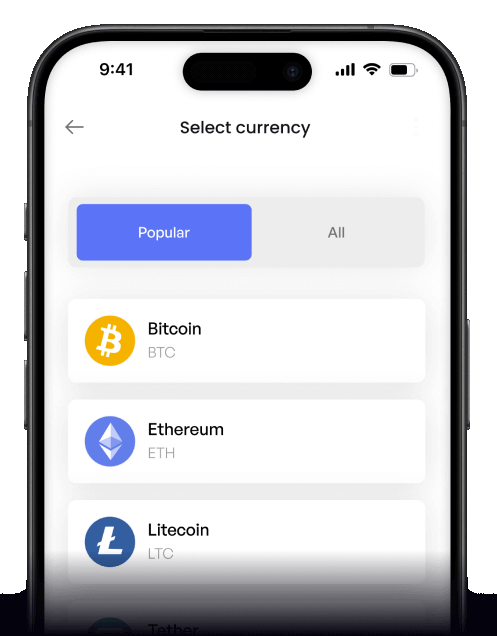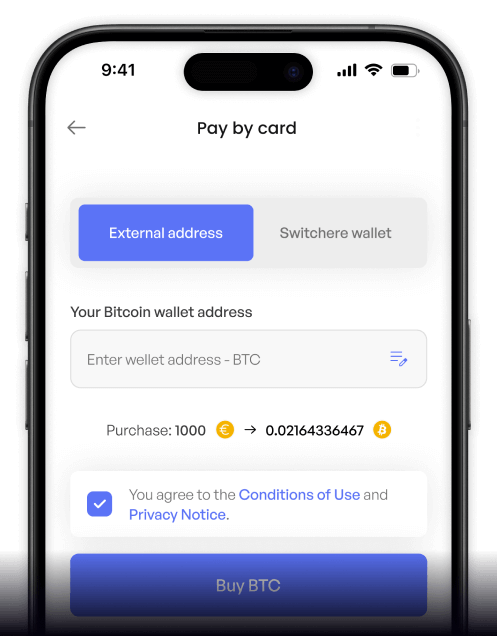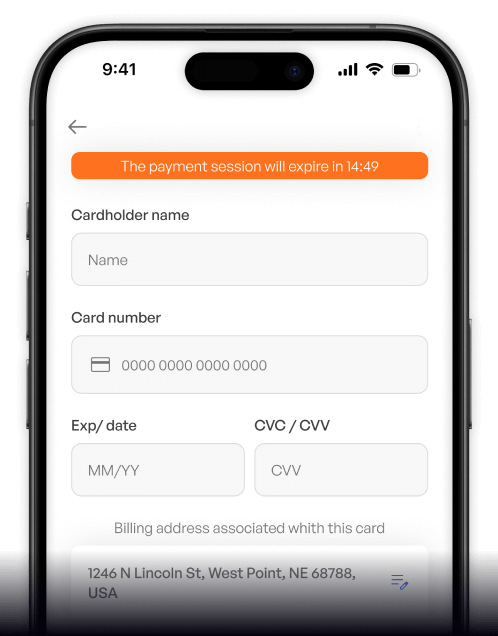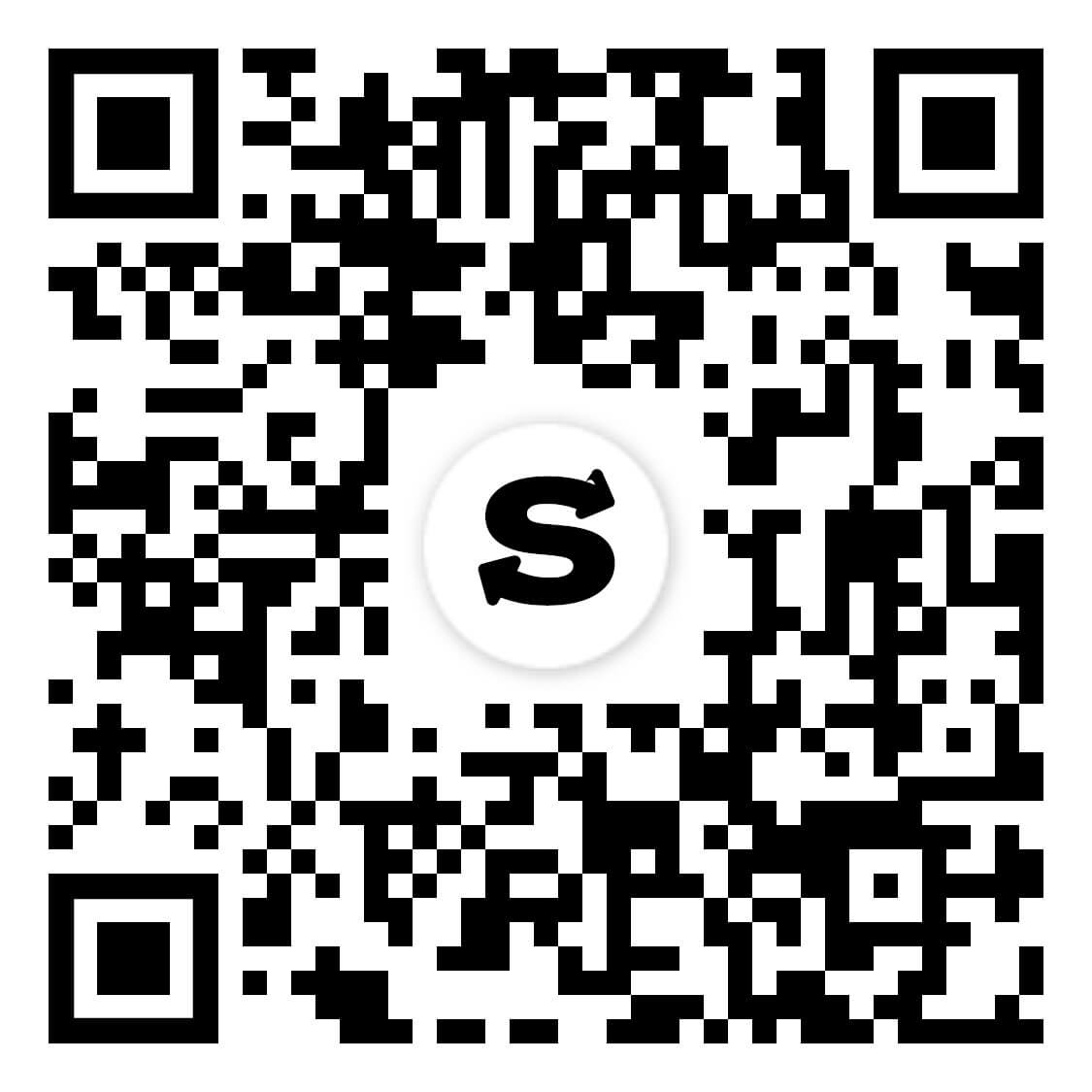Convert
Australian Dollar (AUD) to Wrapped Bitcoin (WBTC) Instantly
Purchase Wrapped Bitcoin (WBTC) with Australian Dollar (AUD) easily at Switchere and benefit from fast, secure transactions.
About
Wrapped Bitcoin (WBTC)
Wrapped Bitcoin (WBTC) is an ERC-20 token on the Ethereum blockchain, designed to represent Bitcoin (BTC) on a 1:1 basis, thereby bringing Bitcoin's immense liquidity and value into the decentralized finance (DeFi) ecosystem. Its primary purpose is to enhance interoperability, allowing Bitcoin holders to utilize their digital assets within Ethereum's burgeoning landscape of smart contracts and DeFi applications without selling their BTC. This tokenization of Bitcoin effectively bridges two major blockchain networks, addressing a significant challenge in the crypto space.
The core mechanism behind WBTC involves a federation of custodians and merchants who mint new WBTC by locking up an equivalent amount of actual Bitcoin and burn WBTC to redeem the underlying BTC. This process is transparently verifiable on-chain through a Proof of Reserve system, ensuring cryptographic security and maintaining the crucial 1:1 peg. As an ERC-20 token, WBTC seamlessly integrates with Ethereum's infrastructure, including decentralized exchanges (DEXs), lending protocols, and yield farming platforms, expanding the utility of the original digital asset.
The main function of the WBTC token is to serve as a highly liquid, Bitcoin-backed collateral and trading pair within DeFi. Holders can use WBTC for lending, borrowing, providing liquidity to earn fees, or participating in various yield-generating strategies, all while retaining exposure to Bitcoin's price movements. WBTC has become a foundational element in the DeFi space, acting as a key enabler for cross-chain liquidity and a testament to the innovative potential of tokenization within blockchain technology, significantly expanding the on-chain utility of Bitcoin on other networks.
How to Buy Wrapped Bitcoin (WBTC)
Popular Coins for Australian Dollar (AUD)
Other Coins for Australian Dollar (AUD)
Frequently asked questions
-
How can I purchase Wrapped Bitcoin (WBTC) using Australian Dollars (AUD)?
To buy Wrapped Bitcoin (WBTC), an ERC-20 token on the Ethereum network, with Australian Dollars, you typically use a regulated Australian cryptocurrency exchange. The process involves creating an account, completing AUSTRAC-mandated KYC/AML verification, and then using a fiat on-ramp to deposit AUD via methods like PayID, Osko, or a bank transfer. Once your AUD is in your account, you can execute a trade on the AUD/WBTC pair in the exchange's order book. -
What is the key advantage of trading AUD for WBTC instead of native Bitcoin (BTC)?
The primary advantage is WBTC's integration into the decentralized finance (DeFi) ecosystem on Ethereum. While native BTC exists on its own blockchain, WBTC is an ERC-20 token. This allows you to use the value of Bitcoin within Ethereum's dApps for activities like supplying liquidity to pools, yield farming, or using it as collateral in lending protocols, all through smart contracts, which is not directly possible with BTC. -
How is the 1:1 backing of WBTC to BTC secured and verified?
The 1:1 peg is maintained by a system of merchants and custodians. For every WBTC token minted on the Ethereum blockchain, an equivalent amount of Bitcoin is held in reserve by a custodian, such as BitGo. The security of this model relies on the custodian's reputation and security protocols. Verification is achieved through a 'Proof of Reserve' system, where the on-chain addresses of the custodian's BTC reserves are publicly auditable, allowing anyone to confirm the backing. -
What type of digital wallet is required to store WBTC after purchasing with AUD?
Since WBTC is an ERC-20 token, you need an Ethereum-compatible digital wallet, not a native Bitcoin wallet. For secure self-custody after a fiat on-ramp transaction, popular choices include hardware wallets like Ledger or Trezor, or software wallets like MetaMask. These wallets allow you to interact with the Ethereum blockchain and manage any ERC-20 compliant digital asset. -
Are there specific Australian regulations to consider when performing AUD to WBTC transactions?
Yes. Digital currency exchanges operating in Australia must register with the Australian Transaction Reports and Analysis Centre (AUSTRAC). This means that to trade AUD for any digital asset, including WBTC, you must complete Know Your Customer (KYC) and Anti-Money Laundering (AML) checks. Using an AUSTRAC-compliant exchange is crucial for a secure and legally sound fiat on-ramp experience.






